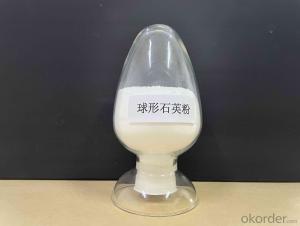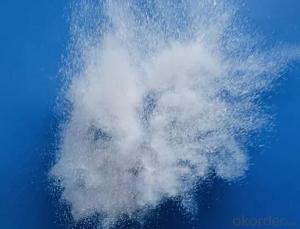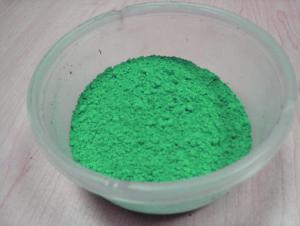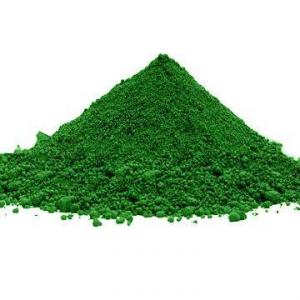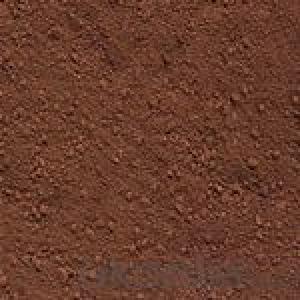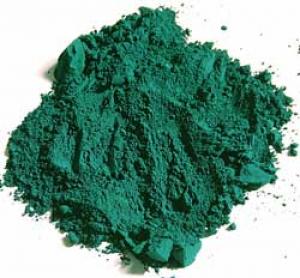Phthalocyanine Green G, C.I.P.G.7
- Loading Port:
- Qingdao Port
- Payment Terms:
- TT or LC
- Min Order Qty:
- 1 Metric Ton m.t.
- Supply Capability:
- 7,500MT/Year m.t./month
OKorder Service Pledge
OKorder Financial Service
You Might Also Like
Product Details Of Phthalocyanine Green L8710 :
It is deep green posder with bright color and high coloring ability.
It can't dissolve in water and ordinary solvent.
It's olive green in concentrated sulphuric acid and turns to green sediment after diluted.
It has good sunning-resistance and heatresistance which belong to chorocopper phthalocyanine fade-less color.
TDS of Phthalocyanine Green | |||||
Chemical Structure | CuPc Halide | ||||
Color Index No. | PG 7/74260 | ||||
Application | Paint | ||||
Physical Form | powder | ||||
| |||||
Test Items | Index | Test Method | |||
Relative Tinting Strength | 100 +_5% | DIN55986 | |||
ΔE,ΔL,Δa,Δb | ≤1,+1,+1,+1 |
| |||
| |||||
Items | Index | Test Method | |||
PH | 6.5~8 | DIN ISO 787-9 | |||
Density 20℃ g/cm3 | 2.1 | DIN ISO 787-10 | |||
BET m2/g | 61 | DIN 66131 | |||
Oil absorption g/100g | 32~42 | DIN ISO 787-5 | |||
105℃ Volatile Matter | ≤1.0% | DIN ISO 787-2 | |||
Water Solubles | ≤1.5% | DIN ISO 787-13 | |||
Residue on Sieve 100 mesh | ≤5% | DIN 53195 | |||
| |||||
Solvent Resistance | Index | Test Method | |||
Water | 5 | DIN ISO 105-A03 | |||
White Spirit | 4~5 | DIN ISO 105-A03 | |||
Ethanol | 4~5 | DIN ISO 105-A03 | |||
Acetone | 4~ 5 | DIN ISO 105-A03 | |||
Di methylbenzene | 4~5 | DIN ISO 105-A03 | |||
| |||||
Tolerance | Index | Test Method | |||
Light Fastness | 8 | DIN ISO 105-A03 | |||
Weather Resistance | 5 | DIN ISO 105-A03 | |||
Acid Resistance | 5 | DIN ISO 105-A03 | |||
Alkali Resistance | 5 | DIN ISO 105-A03 | |||
Hot Resistance | 230℃ |
| |||
Suggest Using of Phthalocyanine Green :
It is used for coloring of paints. printing ink, varinished cloth and things of culture & education.
Package Of Phthalocyanine Green :
25 kg / bag ,or as your requirement .
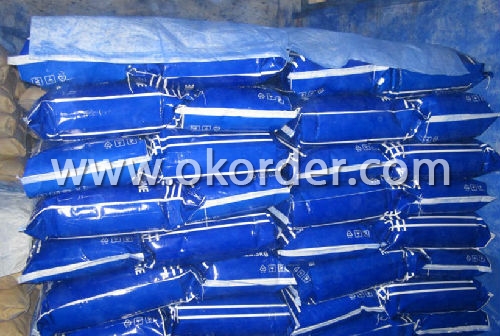
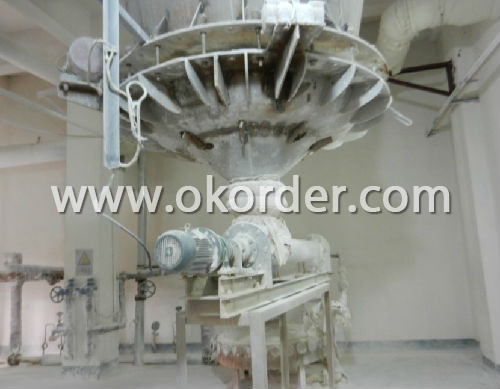
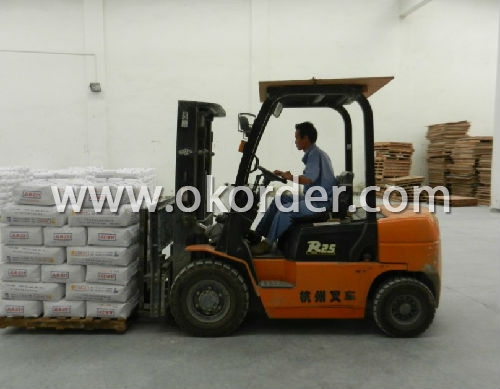
- Q:What pigments take part in photosynthesis?
- Chlorophylla-a is the primary pigment for photosynthesis in plants, but the range of light absorption is extended by chlorophyll-b, beta-carotene (a carotenoid).
- Q:I am about to purchase a bunch of MAC pigments and I have noticed that they all look glittery, is this just the kind that i am looking at? I know they are versatile, so that is why i want to buy them. And it seems as though they will last longert than eyeshadow...
- If you get MAC pigments, of course they will be much more pigmented as regular eyeshaodws, cause that's what it is.. pigments =] I love using pigments!!! I also love mixing it with some fix + Use it wet for a more brighter look
- Q:1.what is pigment2.what is it for ( whats its purpose?)3.what are other things people do with it
- Pigment is a loose powder that has highly concentrated color. They come in different finishes like matte or shimmery. You can use them as eye shadows and such, which is what most people do with them. They show up better and the metallic ones can be foiled (more vivid color and looks like metal almost) if you use them wet by putting a little bit of mixing medium or eye drops on your brush before dipping it in the pigment and applying it. They can also be used as lip colors by mixing with a clear lipgloss, or eyeliner if you use them wet or mix them with something like MAC's special eyeliner mixing medium. They also make a mascara mixing medium that can be used with pigments. Pigments really are a handy, universal product to have! Keep in mind that some pigments are not safe for use in the eye and/or lip area. If you look at MAC's website where the pigments are, you can check out the specifics about that under View Recommended Use. Also, if you use pigments wet, it's best to get a little bit of it in the jar lid, then dip the brush in it. That way you won't dampen and ruin the pigments in the jar, and moisture in the jar could promote the growth of bacteria.
- Q:light absorption, which pigments are involved?
- All photosynthetic organisms contain one or more organic pigments capable of absorbing visible radiation, which will initiate the photochemical reactions of photosynthesis. The three major classes of pigments found in plants and algae are the chlorophylls, the carotenoids and the phycobilins. Carotenoids and phycobilins are called accessory pigments since the quanta (packets of light) absorbed by these pigments can be transferred to chlorophyll. Chlorophylls chlorophyll a - present in all higher plants and algae chlorophyll b - present in all higher plants and green algae chlorophyll c - diatoms and brown algae chlorophyll d - red algae (chlorophyll a is present in all photosynthetic organisms that evolve O2.) Chlorophyll molecules contain a porphyrin 'head' and a phytol 'tail'. The polar (water-soluble) head is made up of a tetrapyrrole ring and a magnesium ion complexed with the nitrogen atoms of the ring. The phytol tail extends into the lipid layer of the thylakoid membrane. Carotenoids (carotenes and xanthophylls) Carotenes: -carotene - higher plants and most algae $-carotene - most plants some algae xanthophylls: luteol, fucoxanthol and violaxanthol Carotenoids contain a conjugated double bond system of the polyene type (C-C=C-C=C). Energy absorbed by carotenoids may be transferred to chlorophyll a for photosynthesis. Phycobilins (found mostly in red and blur-green algae): phycoerythrin phycocyanin allophycocyanin )
- Q:pigment: its color (to our eyes) what color of light it absorbsChl a Chl bCartenoidsany right answers would bbe greatly appreicated thanks soo muchhh
- pigment: .... reflected color to eyes .. what color of light it absorbs Chl a reflects green spectra between the blue and red absorption peaks. Some is absorbed at blue 450nm but most absorbed at red 680 - 700nm. Chl b reflects green spectra between the blue and red absorption peaks with a difference in which peak is stronger. Most is absorbed at blue 470 but also some at blue 430 and red 640 nm. Cartenoids reflect yellow, orange, or red and absorbs blue to blue-green light spectra. Xanthophyll absorbs well at 400-530 nm. Xanthophylls are a common sub class of the carotenoid pigment group. Beta-carotene absorbs most strongly between 400-500 nm.
- Q:I hear about it cause my Friend is albino and she was born with no pigments in her hair,skin or eyes
- Melanin is a pigment that is ubiquitous in nature, being found in most organisms (spiders are one of the few groups in which it has not been detected). In animals melanin pigments are derivatives of the amino acid tyrosine. The most common form of biological melanin is eumelanin, a brown-black polymer of dihydroxyindole carboxylic acids, and their reduced forms. All melanins are derivatives of polyacetylene. The most common melanin – dopamelanin – is a mixed copolymer of polyacetylene, polyaniline, and polypyrrole. Another common form of melanin is pheomelanin, a red-brown polymer of benzothiazine units largely responsible for red hair and freckles. The presence of melanin in the archaea and bacteria kingdoms is an issue of ongoing debate among researchers in the field. The increased production of melanin in human skin is called melanogenesis. Production of melanin is stimulated by DNA damage induced by UVB-radiation,[1] and it leads to a delayed development of a tan. This melanogenesis-based tan takes more time to develop, but it is long lasting.[2] The photochemical properties of melanin make it an excellent photoprotectant. It absorbs harmful UV-radiation and transforms the energy into harmless heat through a process called ultrafast internal conversion. This property enables melanin to dissipate more than 99.9% of the absorbed UV radiation as heat[3] (see photoprotection). This prevents the indirect DNA damage that is responsible for the formation of malignant melanoma and other skin cancers. Albinism (from Latin albus, white; see extended etymology, also called achromia, achromasia, or achromatosis) is a congenital disorder characterized by the complete or partial absence of pigment in the skin, hair and eyes due to absence or defect of an enzyme involved in the production of melanin.
- Q:which do you think is better??? and how do you apply pigment??? my boyfriend gave me a bag full of MAC make up in which there are 2 pigment bottles... i already love their eyeshadow.. i just want people's opinion on which one is better and when to use pigment... i mean, what is the difference??? Help Please!
- Pigment gives a stronger color. You can apply it normally like shadow with a brush or put water on the brush and apply it to intensify the color. I like pigment for a night time look and shadow in the evening.
- Q:explain how the pigments in colored objects such as clothes differ from plant pigments
- Green pigments absorb light in the red and blue parts of the spectrum and reflect the green back to our eyes. The major functional difference between chlorophyll and say jade green is that only the chlorophyll in living systems can transfer the absorbed light energy and the excited electron to another molecule, thus trapping it. In biology, pigment is any material resulting in color in plant or animal cells which is the result of selective absorption. Some biological material has so-called structural color, which is the result of selective reflection or iridescence, usually done with multilayer structures. Unlike structural color, pigment color is the same for all viewing angles. Nearly all types of cells, such as skin, eyes, fur and hair contain pigment. Butterfly wings typically contain structural color, although many of them contain pigment as well. Creatures that have deficient pigmentation are called albinos. In the coloring of paint, ink, plastic, fabric and other material, a pigment is a dry colorant, usually an insoluble powder. There are both natural and synthetic pigments, both organic and inorganic ones. Pigments work by selectively absorbing some parts of the visible spectrum (see light) whilst reflecting others. A distinction is usually made between a pigment, which is insoluble, and a dye, which is either a liquid, or is soluble. There is no well-defined dividing line between pigments and dyes, however, and some coloring agents are used as both pigments and dyes. In some cases, a pigment will be made by precipitating a soluble dye with a metallic salt. The resulting pigment is called a lake.
- Q:What is better, Mac eye pigments or the regular eyeshadow? Also, has anyone tried the mixing medium solution?
- no longer each and every of the pigments are meant for the eyes; some are purely for the cheeks and/or lips. in case you purchase the pigments, there's slightly paper featuring it that tells you which of them of them are eye secure. As for the crushed pigments, I heard they paintings purely superb for the eyes.
- Q:How can you extract pure pigments from a sample of leaves in a form that you could test the absorbency of the various pigments??I don't know how to extract enough pigment in order to fill a cuvette and measure the absorbance, please help!! :D
- Separation of plant pigments using chromatography. Paper chromatography is a useful technique in the separation and identification of different plant pigments. In this technique, the mixture containing the pigments to be separated is first applied as a spot or a line to the paper about 1.5 cm from the bottom edge of the paper. The paper is then placed in a container with the tip of the paper touching the solvent. Solvent is absorbed by the chromatographic paper and moved up the paper by capillary action. As the solvent crosses the area containing plant pigment extract, the pigments dissolve in and move with the solvent. The solvent carries the dissolved pigments as it moves up the paper. The pigments are carried along at different rates because they are not equally soluble. Therefore, the less soluble pigments will move slower up the paper than the more soluble pigments. This is known as developing a chromatogram.
1. Manufacturer Overview |
|
|---|---|
| Location | Henan ,China |
| Year Established | 1970 |
| Annual Output Value | Above US$100 Million |
| Main Markets | North America; South America; Eastern Europe; Southeast Asia; Africa; Oceania; Mid East; Eastern Asia; Western Europe; Southern Europ; South Asia |
| Company Certifications | REACH, ROSH,SVHC 53 Items Certificate ,SGS,CIQ,ISO9001:2008 |
2. Manufacturer Certificates |
|
|---|---|
| a) Certification Name | |
| Range | |
| Reference | |
| Validity Period | |
3. Manufacturer Capability |
|
|---|---|
| a)Trade Capacity | |
| Nearest Port | Xingang Port |
| Export Percentage | 51% - 60% |
| No.of Employees in Trade Department | 300 People |
| Language Spoken: | English; Chinese;Spainsh; Farsi;French;German |
| b)Factory Information | |
| Factory Size: | Above 90,000 square meters |
| No. of Production Lines | Above 3 |
| Contract Manufacturing | Design Service Offered; Buyer Label Offered;OEM |
| Product Price Range | Rock Bottom Price With Best Quality |
Send your message to us
Phthalocyanine Green G, C.I.P.G.7
- Loading Port:
- Qingdao Port
- Payment Terms:
- TT or LC
- Min Order Qty:
- 1 Metric Ton m.t.
- Supply Capability:
- 7,500MT/Year m.t./month
OKorder Service Pledge
OKorder Financial Service
Similar products
New products
Hot products
Related keywords


















